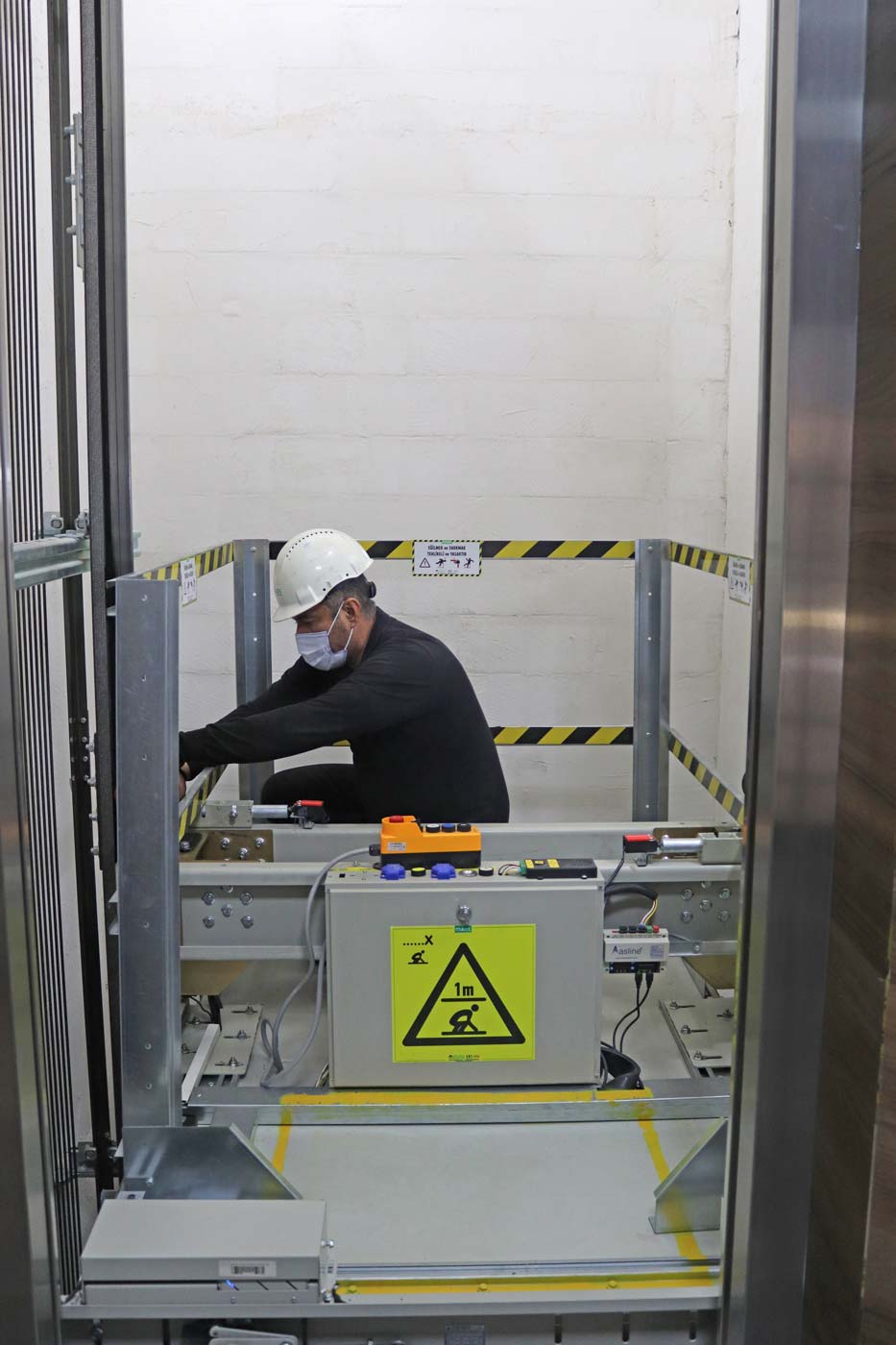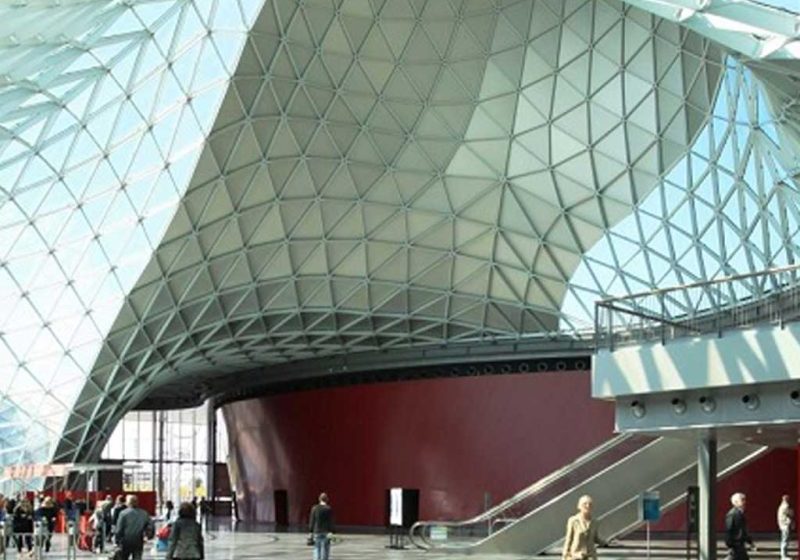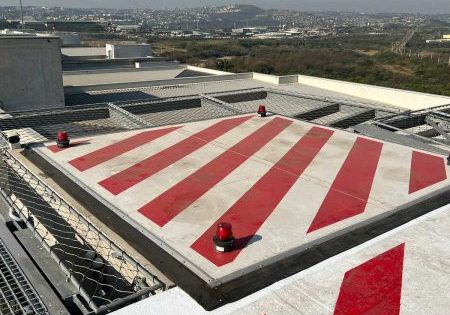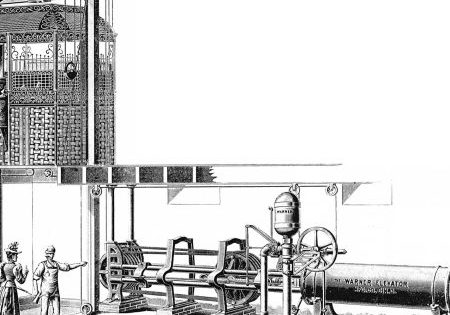The lifts we use in daily life arouse a sense of fear in every user. It often creates worries such as “Will this lift fall?” or “If the lift breaks down, will I suffocate in it?”.
Lifts, which are vertical means of transportation, can work properly, but they can also fall and malfunction from time to time. So, “why do lifts fall or malfunction?”
We do routine maintenance of the cars that we use for transportation every day. They can also let us down when we do not have their service maintenance done, or even one day they may not stop when we step on the brakes. There may be cars, buses, trucks and similar vehicles that do not stop when the brakes are applied, and similar accidents can also occur in lifts.
The probability of our lifts malfunctioning and falling suddenly is not very low. What’s important is how and by whom the maintenance of the lift is managed before reaching that point. Let’s talk about this process in parts:
- Monthly Periodic Maintenance and Repair
- Revision Procedures
- Type A Inspection Organization Controls
1. Monthly Periodic Maintenance and Repair
It is a legal obligation to have periodic maintenance of every lift open to public service, equipped with a call button and carrying people, at least once a month by an authorized service with a Service Competence Certificate (SCC) within the framework of TS EN 13015 + A1 Regulation rules. This obligation is not on the persons using the lift but on the management of the facility where the lift is located. Facility management should contract a service with a Service Competence Certificate (SCC). In line with this contract, it is also obliged to have the periodic maintenance of the lifts under its responsibility and to have them checked by independent organizations. After the contracts are concluded, most of the responsibility passes to the authorized service company.
So, why does the responsibility pass to the authorized service company after the contract? The answer is actually very simple. Users and facility managers only see the cage of the lifts and the indicators of the lift call buttons on the floors. If the lift works, does not make a noise, or fails at an optimum level, the authorized service immediately solves the malfunction even if it malfunctions, does not shake when traveling up and down, and there are no complaints from users, the facility management would think that, “Our lift is safe, our authorized service does its job well.” However, our work is not limited to such a simple framework of rules. The most important aspect is in the lift shafts and machine rooms behind the doors. These parts are only checked by the technicians of the authorized service company who come for routine maintenance every month and by the engineers of approved organizations once a year. For this reason, the main responsibility is on the authorized service company, not the facility management. Because they see the dark or light side of this job.
Lift technicians perform periodic maintenance of lifts at least once a month in accordance with the legal obligation. So, they would visit the lift once a month, even if there is no malfunction. During periodic inspections;
- Machine Room of the Lift (If there is a Machine Room)
- Overhead
- Lift pit
These three areas are mainly checked. Based on the general system requirements in the inspections made:
Visual Inspection, Function Test, Measurement, Adjustment and Cleaning operations are performed. So, which points are controlled in these areas?
Lift Machine Room
In the lift machine room, components such as the lift control panel, drive motor, electrical panel, carrier ropes and connections, and speed regulator assembly are checked. General controls on the control panel safety circuit, the pulleys of the drive motor and the machine motor brake system, the carrier ropes, and the rope and pulley of the speed regulator are done.
Risk: Electric shock, limb entrapment, falling from a moderate height.
Overhead
On the lift overhead, technical personnel check all landing doors, rope connections, counterweight control, and parachute brake controls on the top of the cabin.
Risk: Falling from height, limb entrapment, entrapment between cabin and shaft ceiling.
Lift pit
At the lift pit, technical personnel check the lift pit buffers, safety circuit equipment, regulator tensioning equipment, and parachute brake on the bottom.
Risk: Entrapment between the cabin and shaft bottom, limb entrapment.
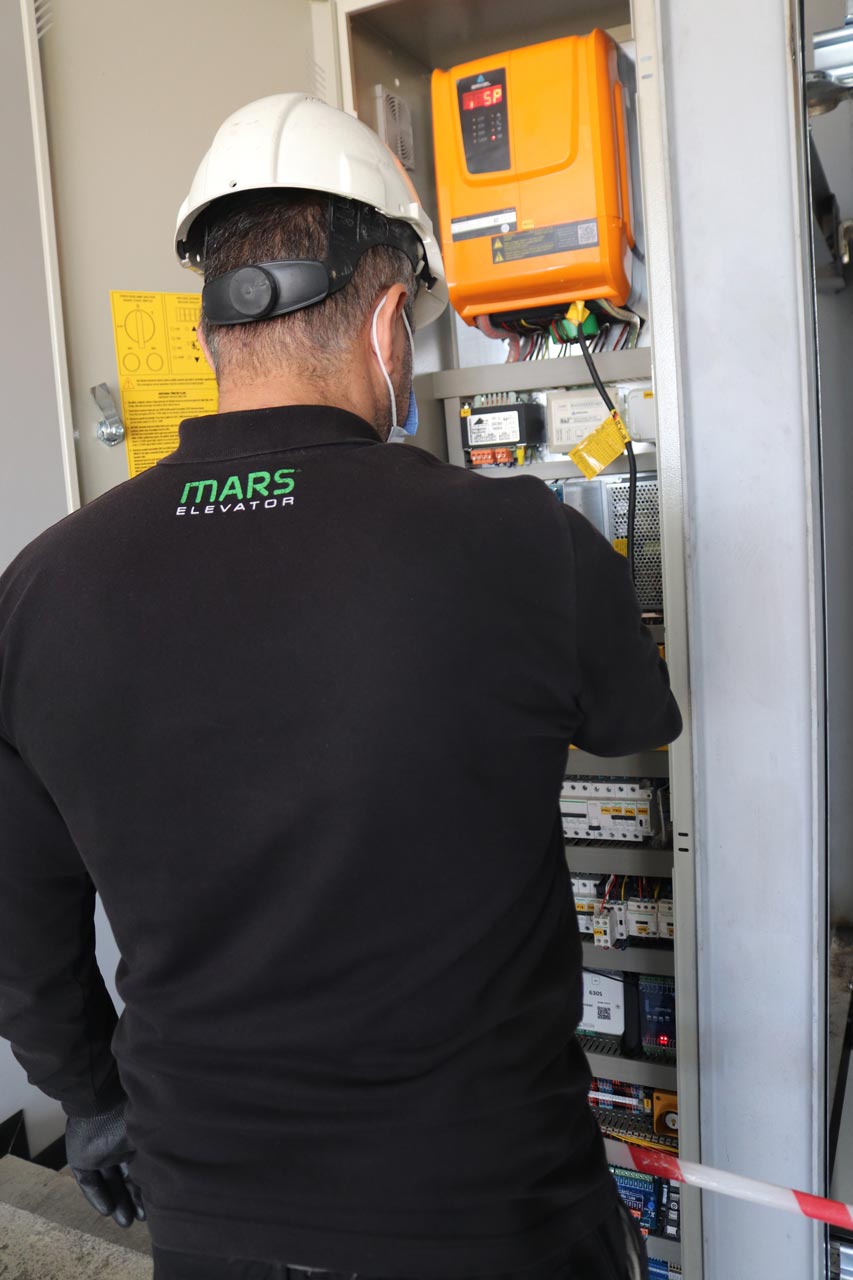
2. Revision Procedures
Technical personnel would contact all equipment of the lift while performing monthly periodic maintenance and repair operations. They are obliged to report all nonconformities encountered during this contact. These nonconformities may be related to equipment that has reached the end of its service life, needs to be replaced due to wear and tear, or has been damaged due to vandalism or structural nonconformities (flooding, power surges, etc.). Regardless of the severity of the relevant nonconformity, they are obliged to report this nonconformity first to the facility management and then to the company where they work. Company officials should then take immediate action based on the severity of the nonconformity, send a proposal to the facility management regarding the actions to be taken and submit it for the approval of the facility management.
3. Type A Inspection Organization Controls
All lifts currently in use must be inspected once a year by Type A Inspection Organization in accordance with the requirements of the Lift Periodic Control Regulation No. 30411 dated 13.09.2022. These organizations are accredited organizations within the scope of TS, EN, IEC, ISO 17020 standards. They exist in Türkiye as private or public institutions and are independent of all lift companies and facility managements. Being an independent organization ensures that all controls are documented with an impartial reporting.
Red Color Information Label: It is affixed to lifts that are not suitable for use and whose use poses a life risk. The unit must be closed immediately and the deficiencies rectified within 60 days. During this period, the lift would only be allowed to operate for revision work.
Yellow Color Information Label: Affixed to defective lifts. The relevant deficiencies must be rectified within 120 days.
Blue Color Information Label: Affixed to lifts with Slight Defects. Relevant nonconformities must be eliminated until the next periodic control.
Green Color Information Label: Affixed to defect-free lifts.
Now, let’s move on to the answer to the question, “Why do lifts fall or why do they malfunction?” Maintenance Repair – Revision – Type A Inspection Organization Controls are actually like the rings of a chain. If all of them are monitored together and on time by authorized companies, the probability of that lift falling will decrease to 1%. If an authorized service does its job properly, performs routine maintenance on time, allocates the appropriate time for maintenance to its technical personnel, and works with technical personnel with a certain level of knowledge and experience, the conditions that may cause a lift to fall would be eliminated.
The factors that can cause a lift to fall are the breakage of the carrier ropes, damage to the machine motor group, or control system failure. If even one of these occurs by itself, the lift cabin will over-speed. However, if the maintenance and periodic inspections of the over-speeding lift are carried out regularly, when the lift reaches 115% over-speed, the parachute brake would activate and the lift would halt. The activation of the parachute brake is only possible if the interconnected mechanisms work properly.
In fact, the most important task here is on the authorized service company. Because no facility manager would know the diameter contraction in the lift ropes, see if there is stranding, feel if there is elongation, and notice if there is flashing. They would not understand if there is a problem with the machine motor group gears if the machine engine brake is not adjusted and if the parachute blocks are unadjusted. If there is a nonconformity in any of them, it is the lift company that should warn about it and correct it. Because, if the maintenance company using a correct maintenance method performs maintenance with competent personnel, none of the chains mentioned above will break and the lift will not fall.
So, how is the malfunction status monitored? First of all, let’s get this out of the way. There is no lift that does not malfunction. Just as any electromechanical device can fail, so can lifts. The important thing is to limit the number of malfunctions to an optimum level. This can be achieved through regular maintenance. For example: If a technician who intervenes in a lift with a tripped residual current relay removes the residual current relay and leaves the facility, this malfunction will recur very soon. The technician should not leave the facility without finding out the reason why the residual current relay trips. They should find the source of the malfunction. Obviously, there is a leak in the system and the system has been alerted. Perhaps the residual current relay is faulty. But, in the end, it malfunctioned due to a problem. Another example is if the contact settings of the landing doors are not checked during maintenance, the contact will be cut in the slightest external intervention on the door and the lift will malfunction.
It really comes down to how well the authorized service center does its job. Working with companies that do their job properly will completely eliminate the concerns I expressed in my first sentence.
As Tom Peters says, “WHEN QUALITY GOES UP, COSTS GO DOWN”.
Get more of Elevator World. Sign up for our free e-newsletter.
